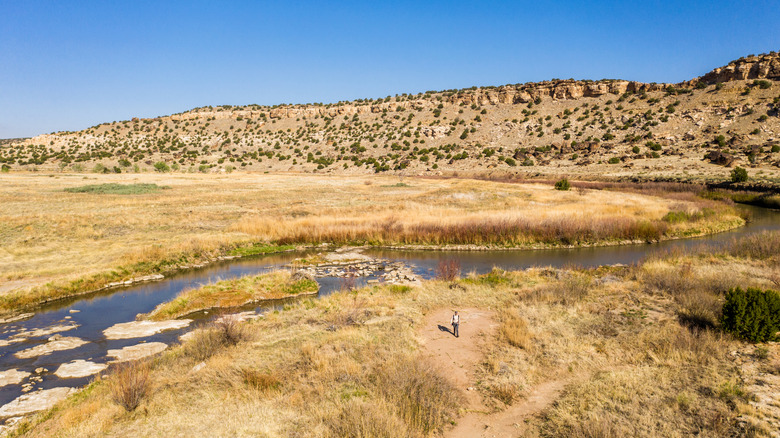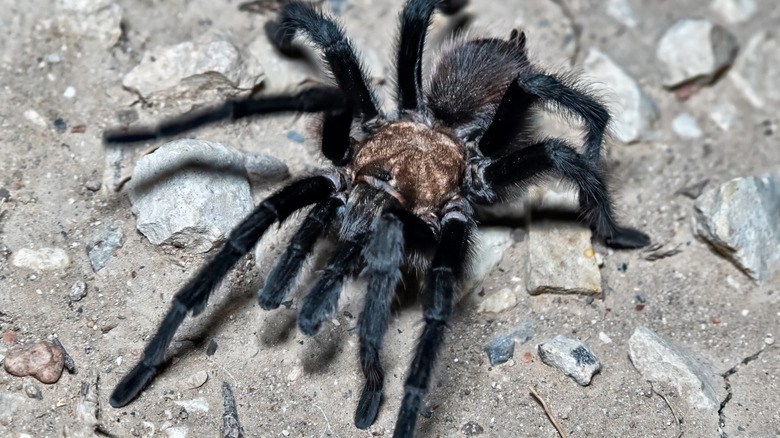Once A Year, Southeast Colorado Becomes A Hotspot Of Activity As Creepy Critters Migrate Across The Land
La Junta is one of Colorado's best-kept secrets, boasting historic charm, scenic beauty, and a low cost of living. On crisp autumn evenings, it's also crawling with enormous fluffy spiders. While you might picture tarantulas crawling around the lush foliage in the heart of the Amazon jungle, different types of these fascinating spiders can actually be found on every continent other than Antarctica, including North America. In fact, Colorado even has its own type: the Colorado Tarantula. These furry black and brown spiders, which have 2-inch bodies and 5-inch legs, live in the southeastern part of Colorado all year long, but the best time and place to see them is Comanche National Grassland on September evenings.
You might know Comanche National Grassland as the home of the largest known dinosaur track site in America, but there are many beautiful natural sights waiting in the prairie. In the fall, tarantulas come up out of their burrows looking for love. If you walk around the grassland at night, you may see some looking for a mate. These incredible creatures have long life spans, and female tarantulas may live upwards of 25 years here, so make sure to treat their land with respect as you search for them.
While the highlight of the show is certainly seeing these spiders scurry through the grasslands, if you come in late September, the height of tarantula viewing season, you will find an entire festival dedicated to the spiders in La Junta. It's called the Tarantula Fest and includes a parade, street vendors selling tarantula-themed mementos, tasty snacks, and tours to help you spot the spiders for yourself. The festival has been popular with locals for a long time, but increasingly, more and more wildlife-loving tourists make the pilgrimage to enjoy the celebrations, too.
How to safely see Colorado Tarantulas on their trek around La Junta
In the fall, male tarantulas embark on an epic journey to find the boroughs of female tarantulas. Once he finds one, he will "knock" by tapping his pedipalps. If she's interested, she will come out to see him. This oddly wholesome mating ritual can take a dark turn from here, as about 20% of the time the female eats her new boyfriend, but don't let that scare you off from checking out the Tarantula Trek for yourself. Despite their large size, tarantulas aren't dangerous to people. They will only bite if picked up and harassed (or perhaps stepped on with bare feet) and even then, their bite is not venomous. While it would hurt a bit, it would not be worse than a bee sting. Their fluffy fur may be cute, but it can also be itchy to touch, so it's best to leave these spiders to complete their mission without trying to pick them up, for both their safety and yours.
The best way to see the spiders is to explore Comanche National Grassland at twilight. Some of the best spots to look are the Timpas Picnic Area in Comanche National Grassland and the trailhead for the Picket Wire Trail, a four-hour trek which goes down into the canyonlands to see dinosaur tracks. You should also call the Comanche National Grassland Resource Office on the day of your trip to ask about spider activity. Consider wearing an orange or high-vis vest to make sure that you're visible to hunters and drivers alike who might miss you in the dim light. As you drive along the highways, passengers should keep their eyes open for spiders while the driver keeps their eyes on the road.

